Snowboard Training At Home: Your Ultimate Guide

Snowboarding and skiing are two of my all time favorite things to do. While hitting the slopes is the best way to sharpen your skills, there’s plenty you can do from the comfort of your own home to enhance your snowboarding abilities.
Whether you’re looking to practice midweek before hitting the slopes on the weekend or want to improve your skills over the summer while waiting for winter to arrive.
From my own experience, I can say how vital it is to train for snowboarding and skiing at home. It helps prepare your body for the slopes and makes sure you’re more ready for the mountain.
Continue reading below for your ultimate guide to snowboard training at home.
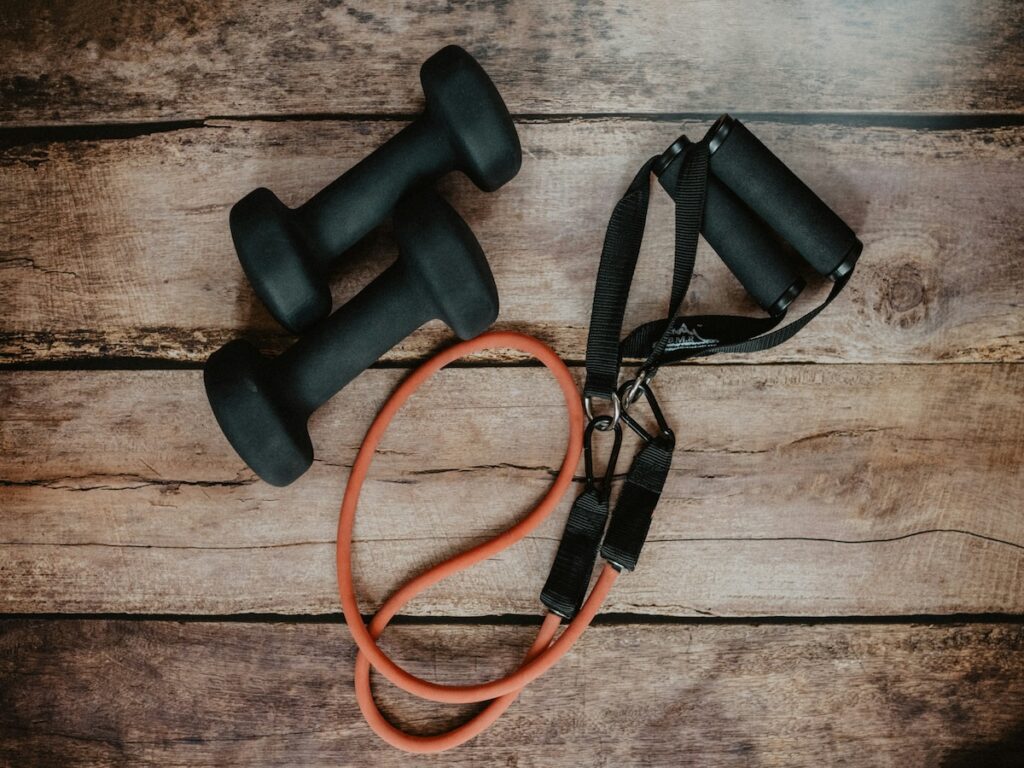
Snowboard Training At Home
When it comes to training for snowboarding at home, there are several components to consider, including stretching, balance work, endurance practice, and targeted exercises. Keep reading to explore some specific tips that will prepare you for the slopes.
1. Work On Flexibility
Flexibility plays a crucial role in mastering snowboarding due to the variety of muscles and positions involved in the sport.
When you hit the slopes, you engage muscles in your legs, core, and back that may not be used as intensively in other activities. That’s why it’s essential to keep these muscle groups limber through regular stretching exercises.
Yoga and Pilates routines are particularly effective for improving flexibility as they target multiple muscle groups while also enhancing balance and body awareness. These practices not only help prevent injuries but also enable you to maneuver more smoothly on the slopes.
By maintaining flexibility in your legs, core, and back, you’ll be better equipped to adapt to the dynamic movements required in snowboarding, such as quick turns, jumps, and landings.
This flexibility allows you to flow more naturally with the terrain, enhancing your overall performance and enjoyment on the mountain.
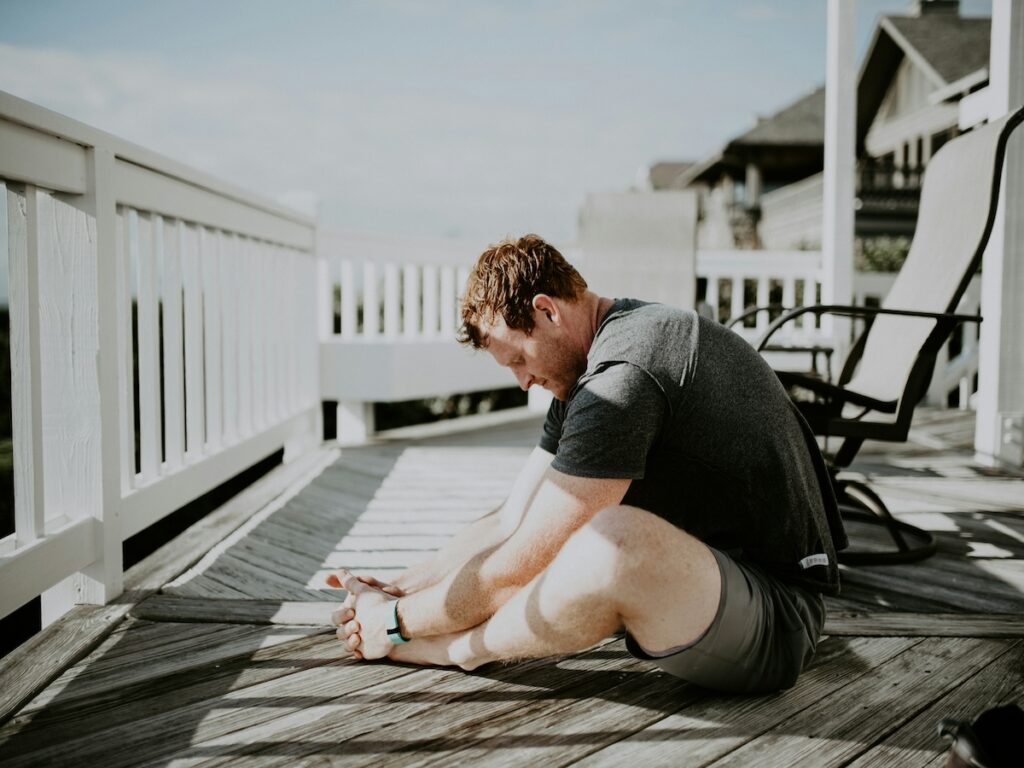
2. Nail Down Balance
Balance is really important in snowboarding. Some people are naturally good at it, but for others, like me, it takes practice. Doing exercises to improve balance has helped me a lot when I’m snowboarding.
One way to get better at balance is by doing exercises like standing on one leg or using a balance board. These exercises make the muscles you use for balance stronger.
Using a balance board is especially good for making your core muscles stronger. This is important for snowboarding because it helps you control the board better, especially when the terrain changes.
Practicing balance exercises not only helps you stay on your board better but also makes you feel more confident on the mountain.
When you have good balance, you can move around obstacles and do tricks more easily. Ultimately making snowboarding even more fun!
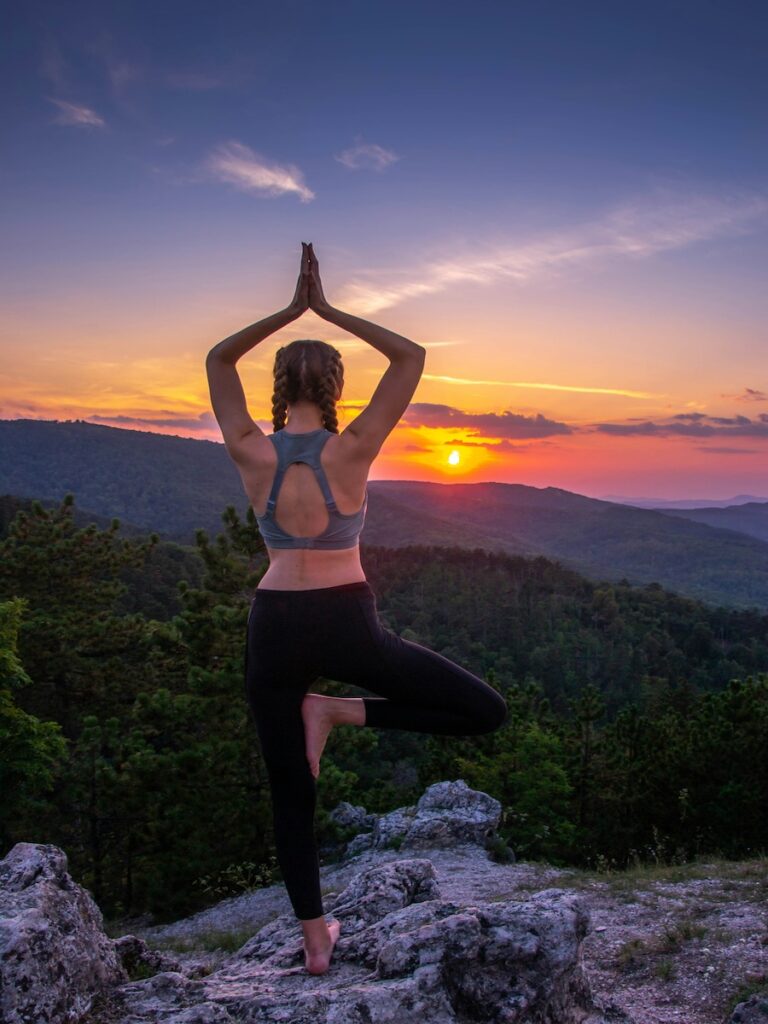
3. Strengthen Your Joints
Snowboarding is an exhilarating sport, but it can also put a lot of strain on certain parts of your body, particularly your calves, knees, hips, and ankles.
When you’re out on the mountain, these joints have to absorb a lot of impact from the various movements and landings involved in snowboarding. Over time, this pain can lead to a bunch of discomfort or even injuries if your muscles aren’t prepared.
To help protect your joints and prevent injury, it’s important to strengthen these areas through targeted exercises. Squats and lunges are great exercise choices because they specifically target the muscles surrounding these joints.
Squats work your quadriceps, hamstrings, and glutes, providing stability and support for your knees. Lunges target similar muscles while also improving balance and coordination, crucial skills for navigating slopes effectively.
Calf raises are another great exercise because they strengthen the muscles in your lower legs, including your calves and ankles, which helps absorb shock and maintain control while snowboarding.
After snowboarding, I often feel hip discomfort, but I’ve learned that stretching, doing cardio, and focusing on leg exercises really help me perform better on the slopes and recover faster.
By incorporating these exercises into your routine, you not only build strength but also enhance stability and balance, key components of injury prevention in snowboarding.
Plus, having a stronger lower body improves your overall performance on the mountain, allowing you to tackle more challenging terrain with confidence.
So, whether you’re cruising down groomed runs or hitting the terrain park, a strong foundation will help you enjoy snowboarding to the fullest while keeping your joints happy and healthy.
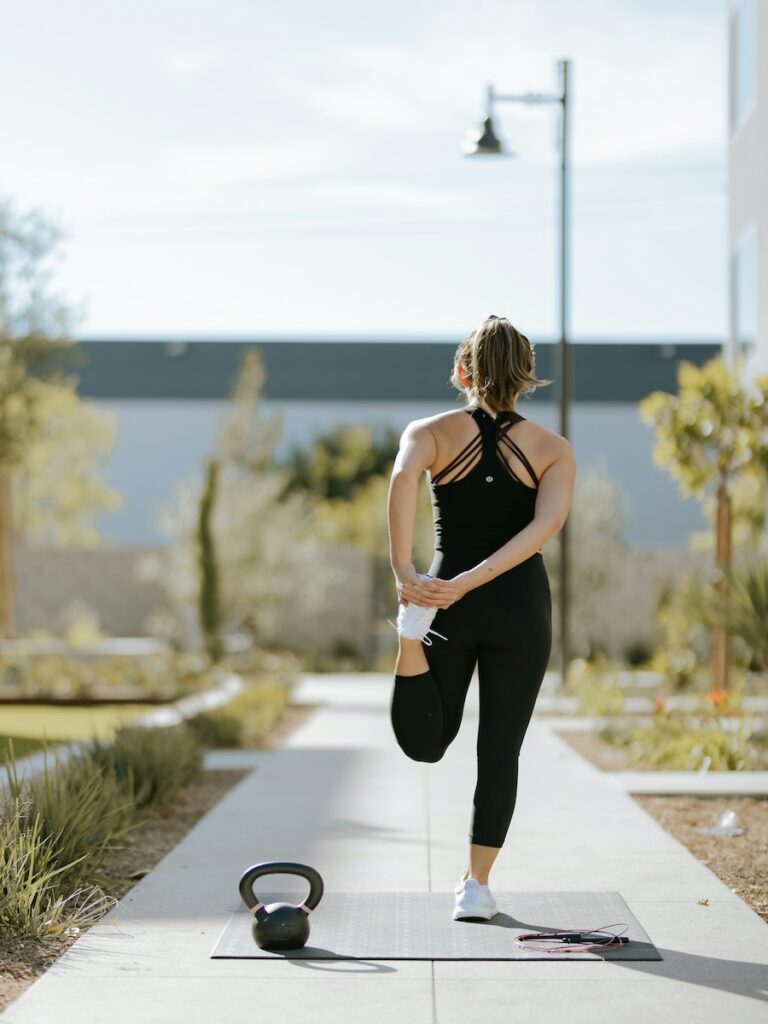
4. Practice Endurance
Snowboarding requires both physical and mental endurance to tackle the challenges of the mountain effectively. Whether you’re carving down steep slopes or conquering terrain parks, having the stamina to keep going is essential for a successful day on the snow.
To build endurance for snowboarding, it’s crucial to incorporate cardio workouts into your training routine. Activities like running, cycling, or jumping rope are excellent choices as they elevate your heart rate and improve cardiovascular fitness.
These exercises not only strengthen your heart and lungs but also condition your muscles to perform efficiently for extended periods.
By engaging in regular cardio workouts, you’ll boost your overall stamina, allowing you to stay energized throughout long days on the mountain.
Whether you’re navigating through powder or hitting groomed catwalk runs, having the endurance to keep going will make your performance better and increase your love of the sport.
I’m a big fan of cardio workouts, especially running, and I can confidently say that both really help me on the slopes. It’s easy to get tired when snowboarding, with the steep runs and higher elevation. Your body might want more breaks, but doing cardio helps you need fewer breaks.
Additionally, endurance training has mental benefits as well. As you push yourself physically, you also strengthen your mental resilience, enabling you to overcome fatigue and stay focused on your riding goals.
This mental toughness is invaluable when facing challenging terrain or attempting new tricks, helping you stay confident and composed under pressure.
Having strong mental endurance has been a big help for me, especially when I’m tackling new terrain or jumps. It allows me to stay focused and fully concentrate on what I’m doing and how to do it successfully.
Overall, incorporating cardio workouts into your snowboard training at home not only improves your physical fitness but also enhances your mental endurance, preparing you for the demands of the mountain and ensuring you can ride longer and stronger.
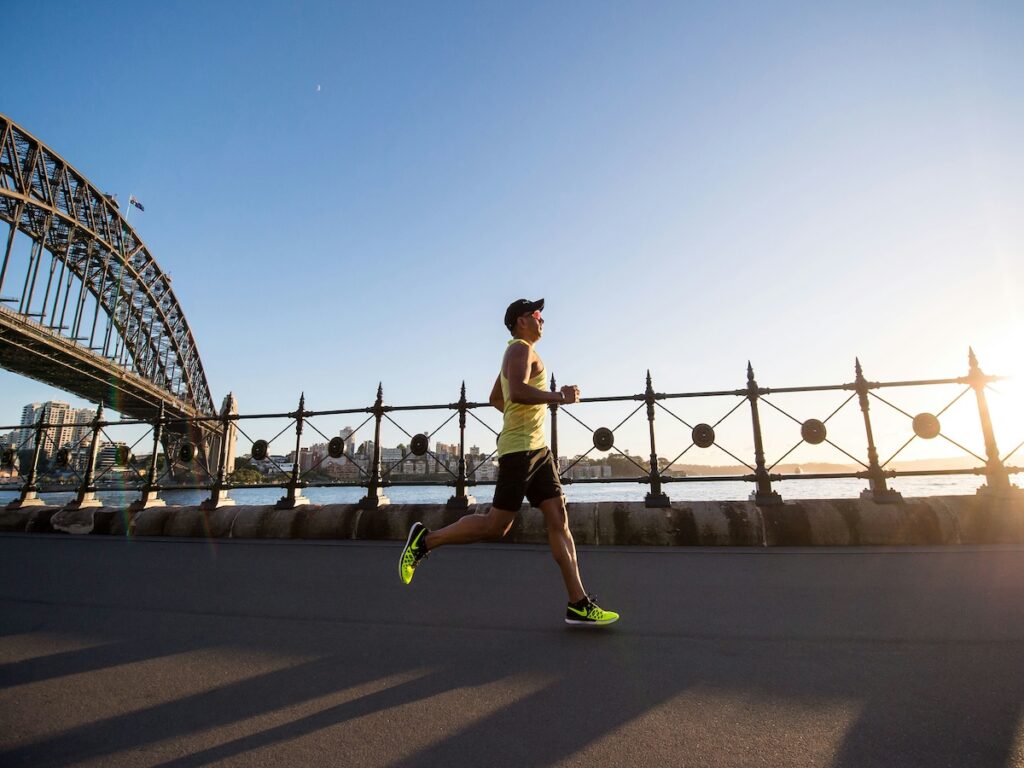
Exercises For Snowboarding
There are a few exercises that are great for snowboarding that you should try. They’ll help keep your body in good shape and ready for the slopes.
- Squats
- Lunges
- Box jumps
- Leg presses
- Calf raises
- Russian twists
- Planks
- Side planks
- Bicycle crunches
- Deadlifts
- Running
- Jumping Rope
- Cycling
- Hamstring Stretches
- Calf Stretches
- Hip Flexor Stretches
- Downward Dog Stretch
- Cat And Cow Stretch
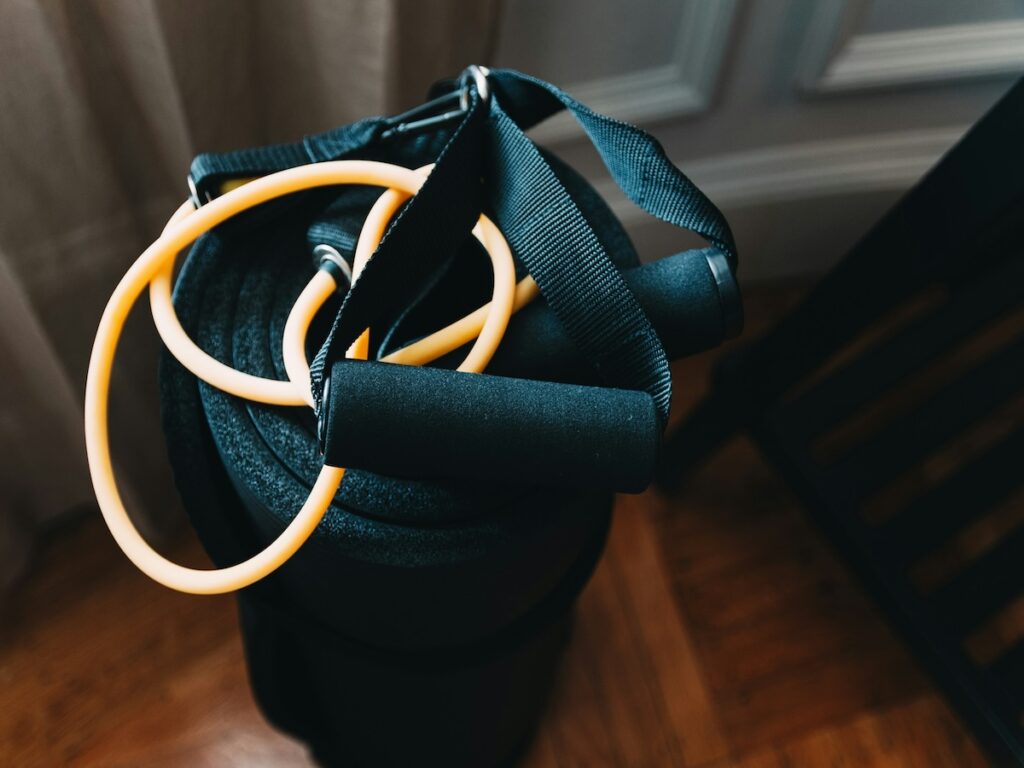
Extra Tips For Snowboard Training At Home
I’ve shared some specific tips on how to practice snowboarding at home, focusing on targeted exercises and specific areas of the body. However, I have a few more personal recommendations that I believe can further enhance your snowboarding experience. Keep reading below as I delve into them.
✅ Practice On Trampolines
Using a trampoline is an excellent way to simulate the feeling of being airborne while snowboarding. It allows you to practice aerial maneuvers, jumps, and rotations in a controlled environment.
Plus, bouncing on a trampoline can help improve your balance, coordination, and spatial awareness, making it a valuable training tool for snowboarders of all levels.
✅ Break In Your Gear
Wear your snowboarding gear around the house and break in your boots before hitting the slopes. This helps your boots mold to your feet and gets you comfortable with your bindings and board.
✅ Watch YouTube Videos
YouTube is full of snowboarding tutorials and tips from pros. Watching these videos can teach you new tricks, improve your technique, and get you mentally prepared for riding.
When I started skiing and snowboarding, I spent a lot of time studying YouTube videos to learn the basics. Now, as an advanced rider, I still use YouTube to pick up new tricks and improve my skills. It’s a fantastic resource, especially for those who learn best visually and want to get better from home.
✅ Try Similar Sports
During the off-season if you want to practice your skills, consider taking up similar sports like skateboarding or wakeboarding. Both of these sports require similar movements and use some of the same muscles which can help keep you train for snowboarding.
✅ Practice Setting Up Your Gear
Get familiar with setting up your snowboard, bindings, and boots at home. Mastering this process saves time on the mountain and lets you focus more on shredding.
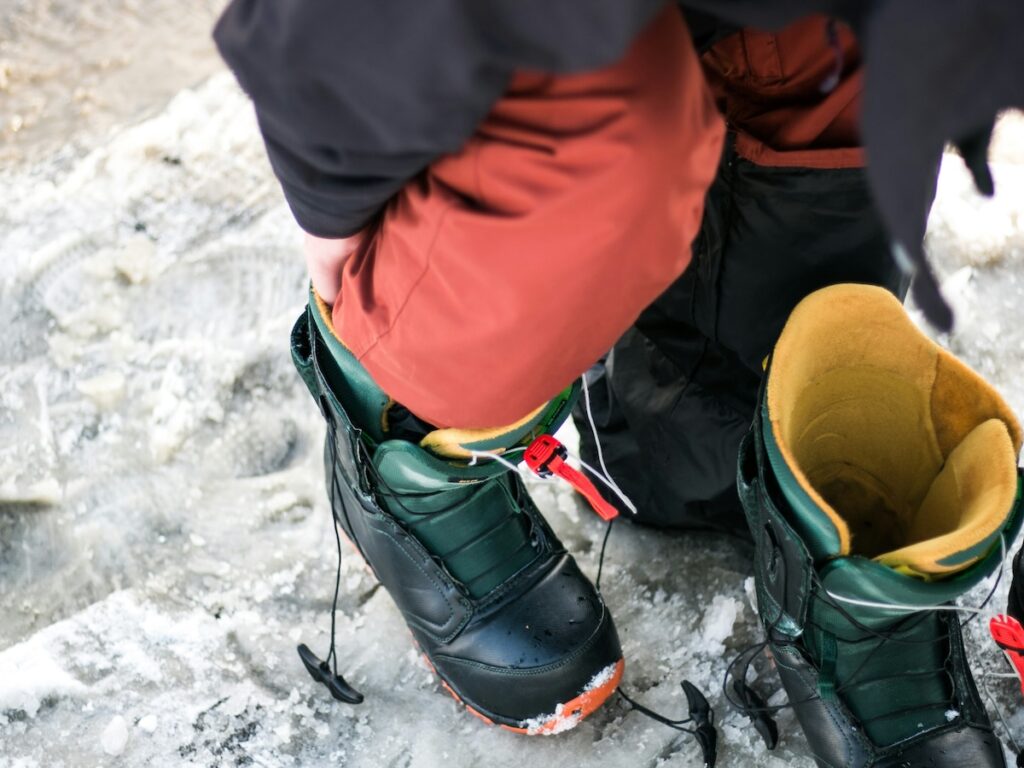
At Home Gear And Equipment For Practicing
You can definitely do some stretching or go for a run without needing any equipment, but there are a few things I suggest having at home to improve your training. Check them out below!
- Balance Board – I love this balance board because it’s great for snowboard practice as it helps you improve balance, stability, and core strength, which are all important for snowboarding.
- Resistance Bands – These are great for strengthening your legs to help improve your endurance and strength while snowboarding.
- Yoga Mat – I highly recommend getting a yoga mat and stretching everyday. It’s the best way to prevent injuries and stiffness.
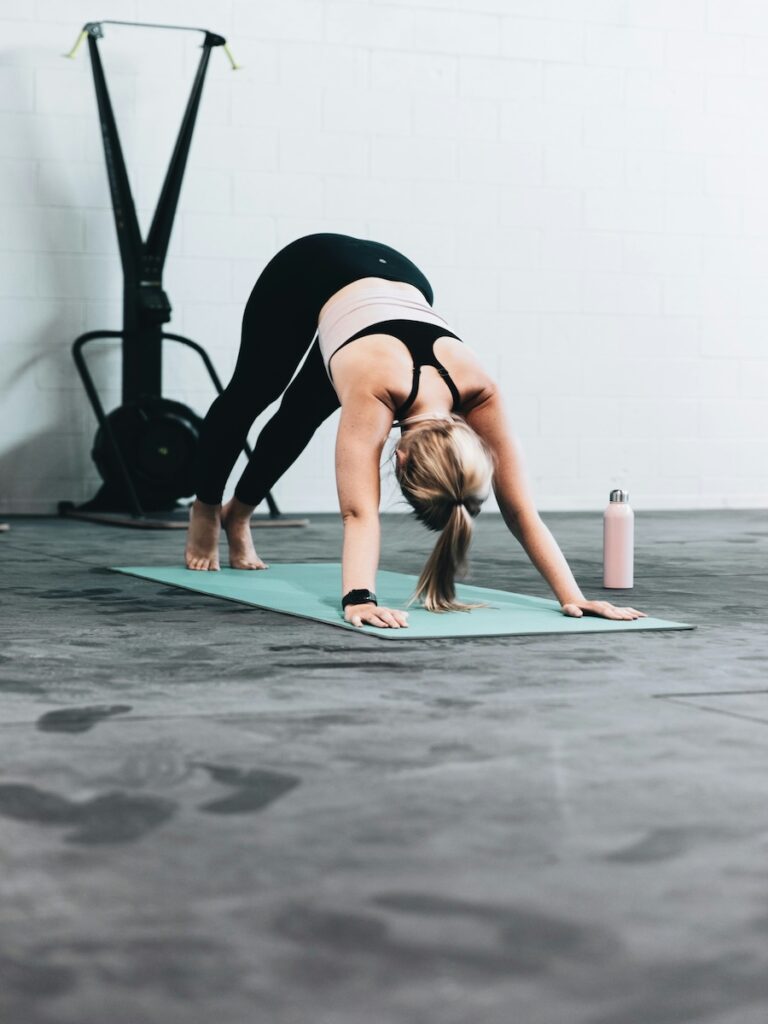
FAQs About At Home Snowboard Training
Continue reading below as I answer a few commonly asked questions about snowboard training at home.
Can I practice snowboarding at home?
Yes, you can practice snowboarding at home through exercises focusing on flexibility, balance, strength, and endurance.
Can I teach myself how do you snowboard?
You definitely can teach yourself how to snowboard. That’s how I taught myself! However, while it’s possible to learn on your own, I recommend taking lessons from a qualified instructor to learn quicker and more proper techniques.
How do I prepare my body for snowboarding?
Prepare your body by working on flexibility, balance, strength, and endurance through targeted exercises and training routines.
Specifically, I recommend regular stretches, cardio workouts, and hydrating to help prepare your body for snowboarding.
How do beginners get better at snowboarding?
Beginners can improve by practicing basic skills, taking lessons, staying physically fit, watching YouTube videos, and gradually challenging themselves on easier slopes.
How do you build leg strength for snowboarding?
Strengthen your legs with exercises like squats, lunges, calf raises, and running to improve stability and power while snowboarding.
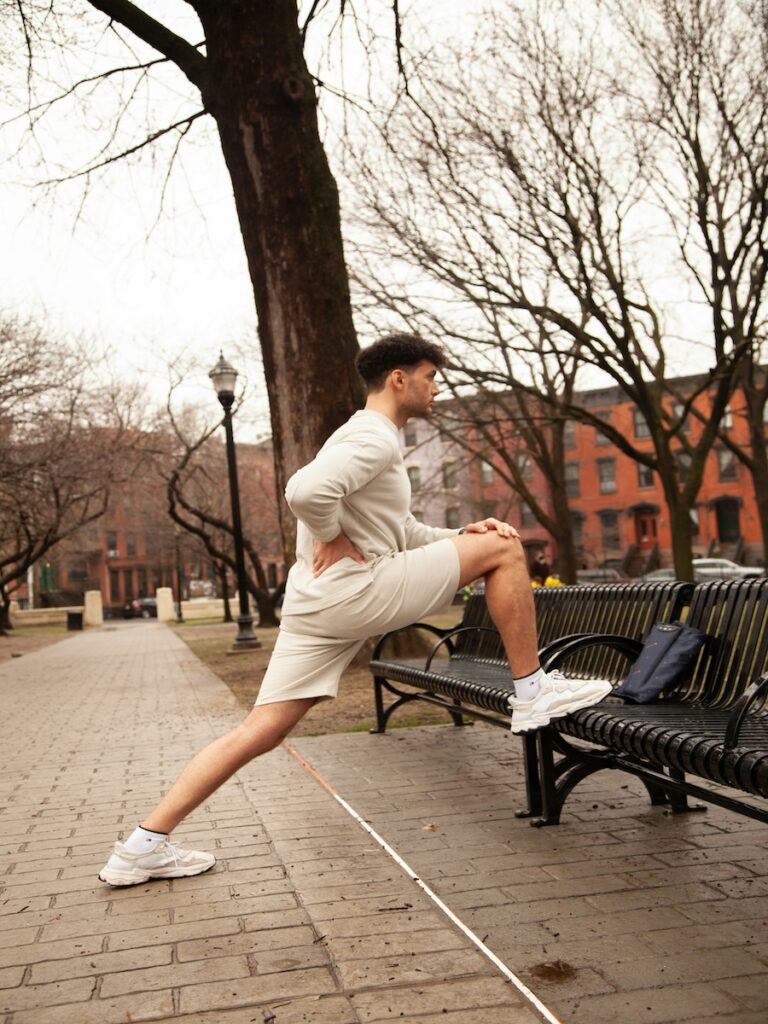
Final Thoughts On Snowboard Training At Home
Training for snowboarding at home is a helpful addition to practicing on the mountain. By working on flexibility, balance, strength, and endurance, you can improve your snowboarding skills and boost your confidence on the mountain, leading to a more enjoyable snowboarding adventure. Remember, consistency and patience are crucial. Keep practicing, and you’ll notice improvement over time.